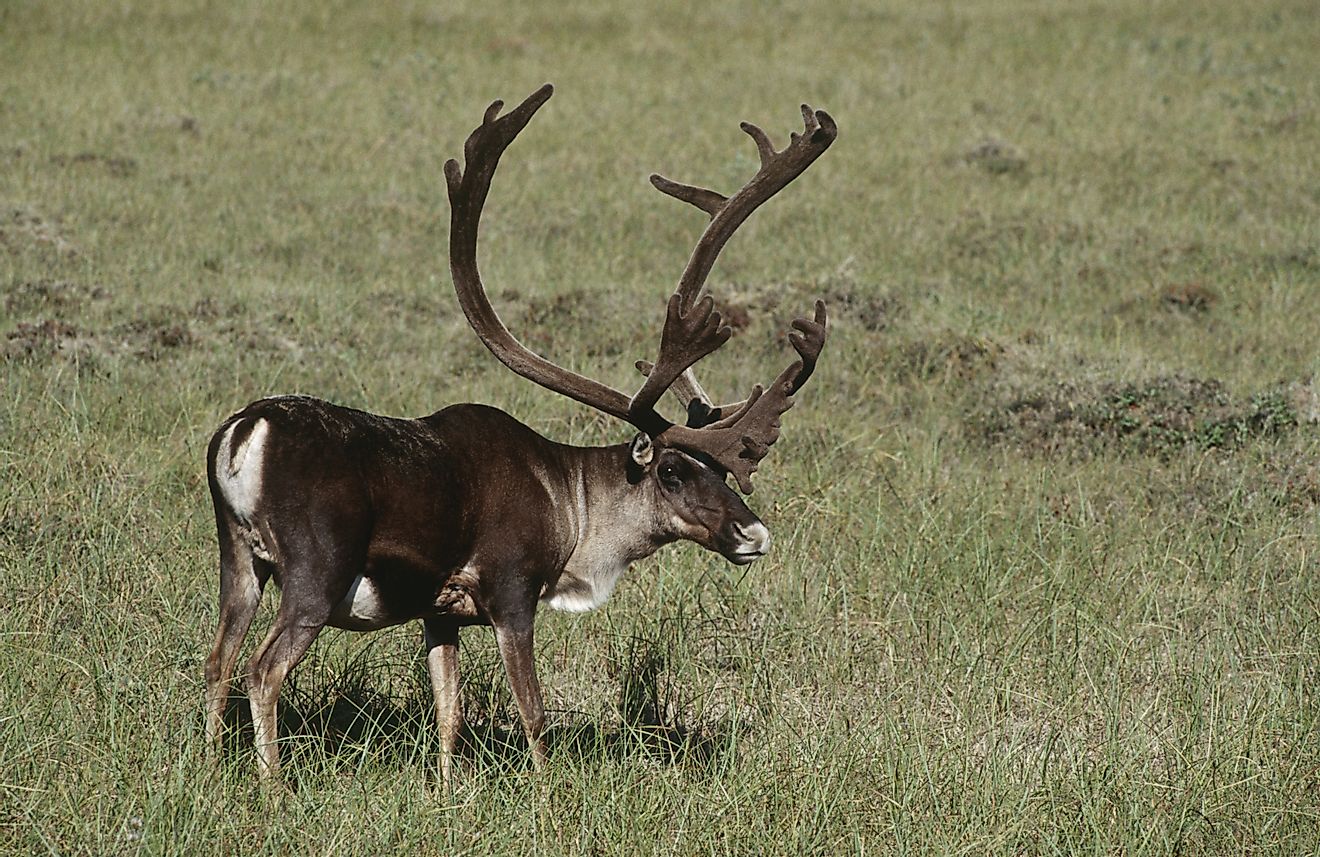Caribou Facts: Animals of North America

- Caribou is a large mammal that can weigh up to 700 pounds and be 5 feet in height at the shoulder.
- During the winter, caribou will often spend time in less sheltered areas because the wind swept ground is less snow covered making the lichen easier to access.
- Caribou have scent glands at the base of their ankles. When an animal senses danger, it will rear up on its hind legs to release a scent that alerts the other caribou.
5. Physical Description
Caribou, the common name of Rangifer tarandus, is a wild species of deer. They belong to a large group of hoofed ungulate mammals in the Order Artiodactyls, which also includes pigs, hippos, camels, giraffes, antelopes, llamas, and many other terrestrial even-toed, hoofed animals. Some definitions also include certain cetaceous marine mammals in this group, namely whales. Caribou are clove-brown with a white neck, rump and feet and often have a while flank stripe. They generally measure around 1.2-2.2 meters in length, and stand 1.2-1.5 meters in height at the shoulder. They often weigh between 318 and 600 kilograms. Their coats are thick, short, and colored brown in summer, and seasonally turn grey in the wake of colder winter conditions. Across much of Alaska, these animals are smaller than in other parts of the world. That said, all Caribou vary considerably in color and size between genders, with males (bulls) typically being significantly larger than females (cows). Furthermore, the antlers of adult “bulls” are massive, while those of adult “cows” are short, and usually more irregular and slender.
4. Diet
Like most migratory herd animals, Caribou have to keep moving in order to find adequate food, and sometimes they even have to cover very long distances at a time. These animals eat mostly lichens in the winter, when their “green” diet of live plants, leaves of willow and birches, grasses, and sedges become scarce. When residing on rich ground, an adult caribou may eat 5 kilograms of food each day. They are animals well adapted to living in the tundra. They possess fur and skin so thick that they are enabled to wade across extremely frigid rivers while migrating.
3. Habitat and Range
This arctic creature is most commonly thought of as North American, but may also be found in Finland, Norway, and Greenland as well. In Europe, caribou are referred to as “reindeer”, but all caribou and reindeer throughout the world are considered be part of the same species. Today it is estimated that around 950,000 caribou live around the world, many of which are facing multiple threats, especially from the climatic changes that are affecting the Arctic and sub-Arctic regions more so than any area on the earth. These animals are also threatened by population density, predation by wolves and grizzly bears, and disease outbreaks as well. Nonetheless, Caribous’ current conservation status is one of “least concern” in terms of threat of extinction. Although herd sizes are on the decline in many of their native habitats, they are being introduced into more and more places that they have never been seen in the wild before.
2. Behavior
The antlers of the caribou grow more forward than upward and outward, and caribou use them to dig in the snow in winter months. They have large hooves, which they often use as tools for digging into frozen tundra, especially in the harsh northlands. Their hooves must be fairly large, big enough to support these animals’ large bulks on snow and to serve as paddles that can efficiently move them through icy waters. They use their hooves as scoops for digging through the snow as they search for food. Sharp hoof edges are very useful for these animals, because they allow them to dig into hard ice and the deeply frozen surfaces of the tundra soils.
1. Reproduction
The mating season for caribou occurs in autumn and the calving season during spring time. More specifically, males fight for access to females. In fact, the most dominant ones are able to collect as many as 15-20 females, in order to mate with. A male stops eating during this time and lose much of its body reserves. The females are ready to give birth in May or June and they usually give birth to one calf. Moreover, caribou are the only deer species, in which both males and females grow antlers. Every year they shed their antlers and the next year they grow new ones.











